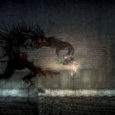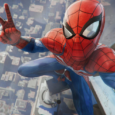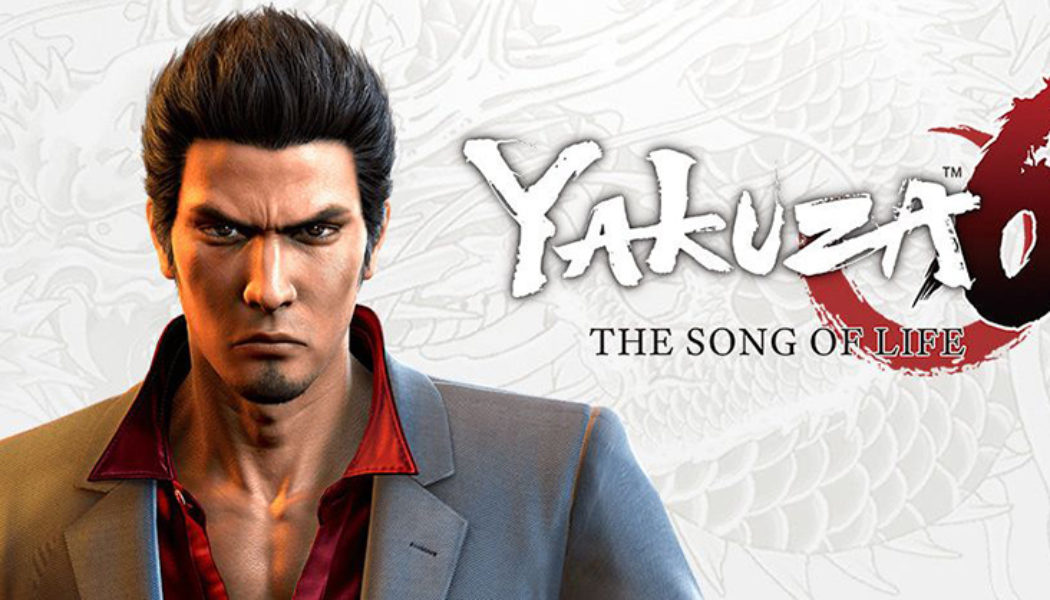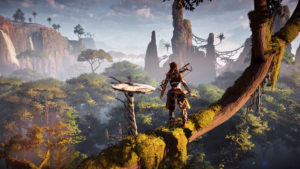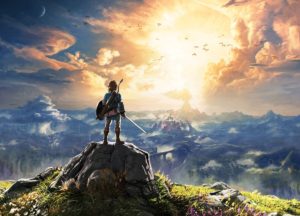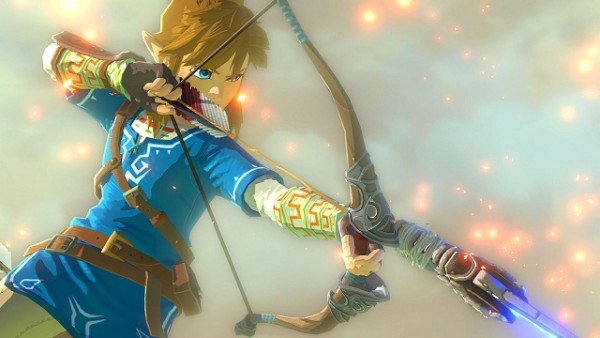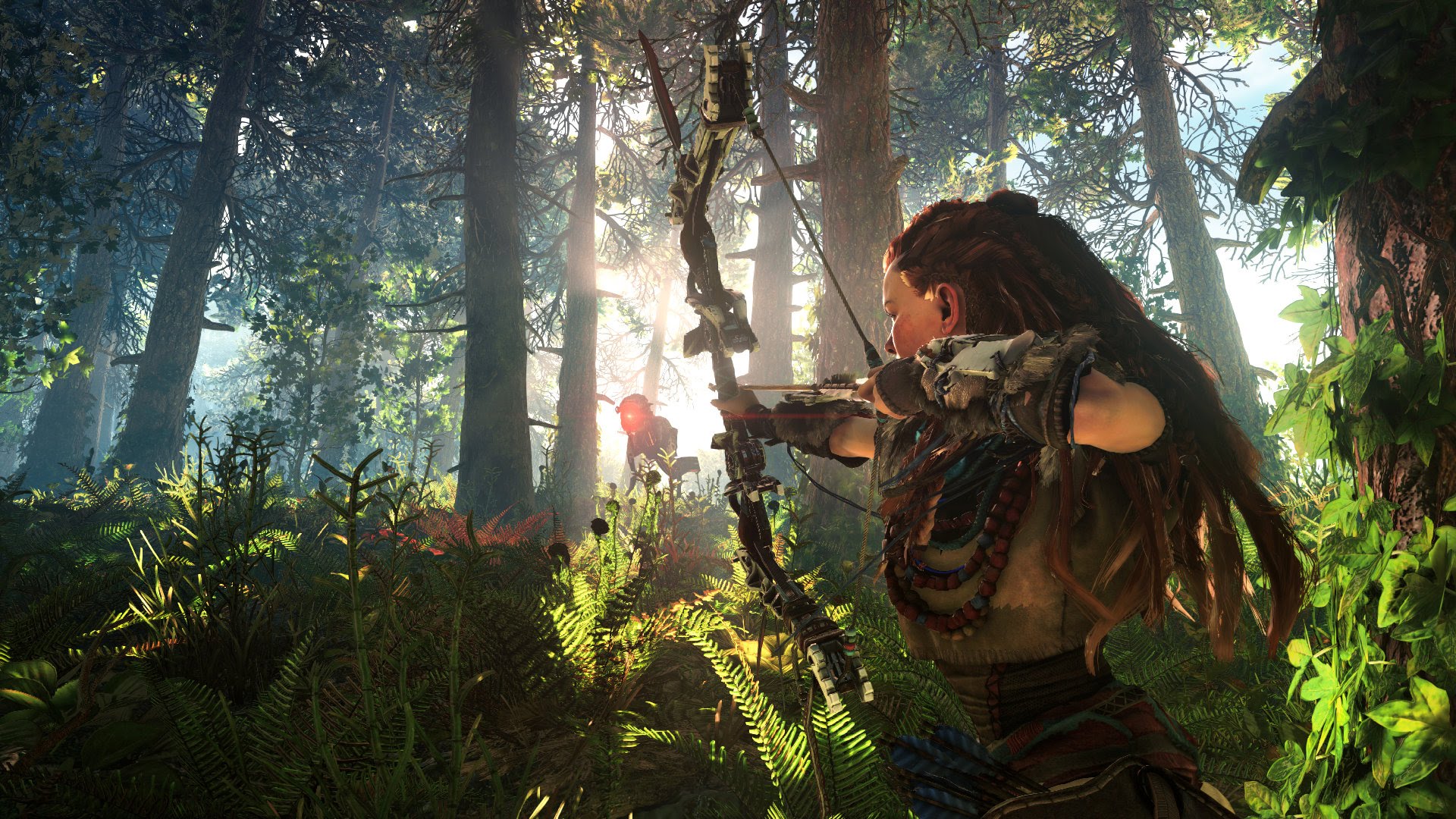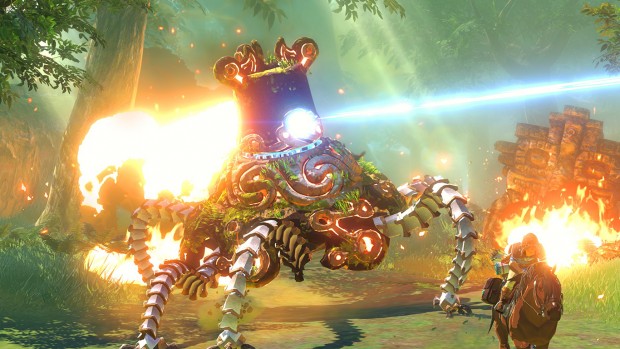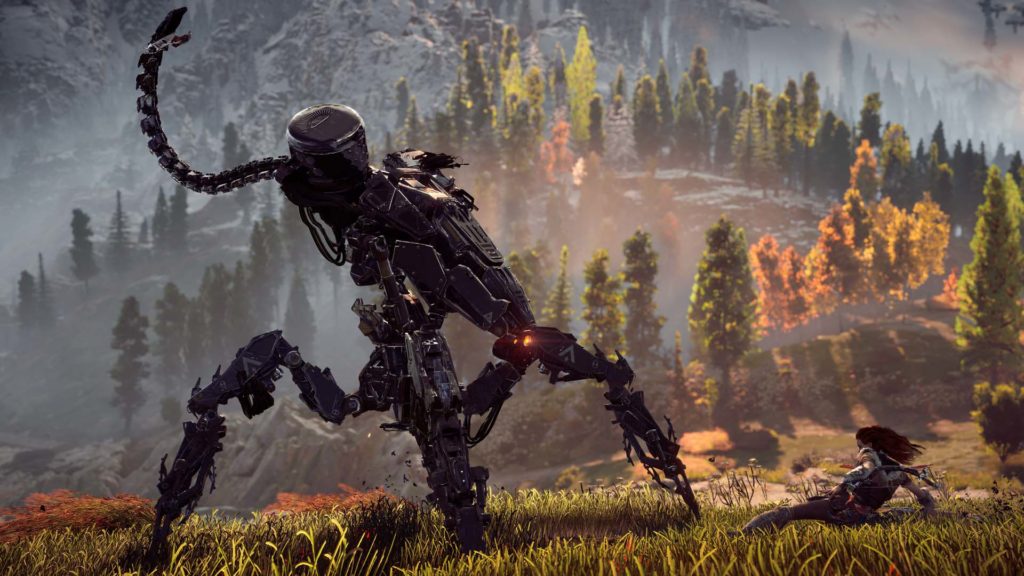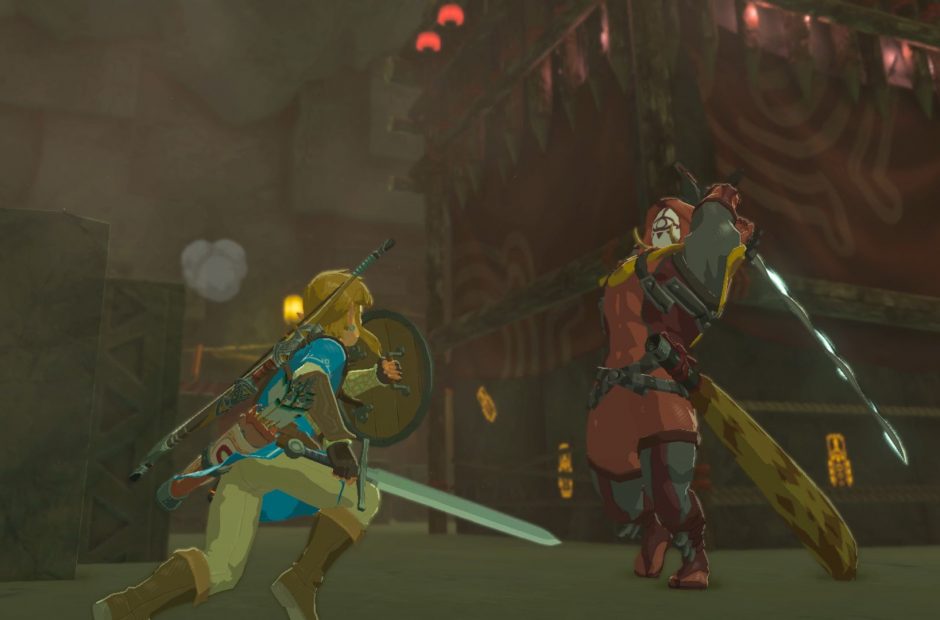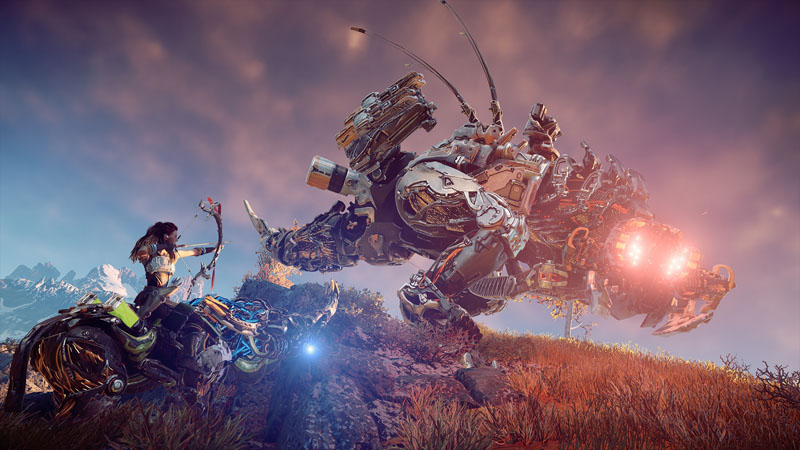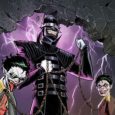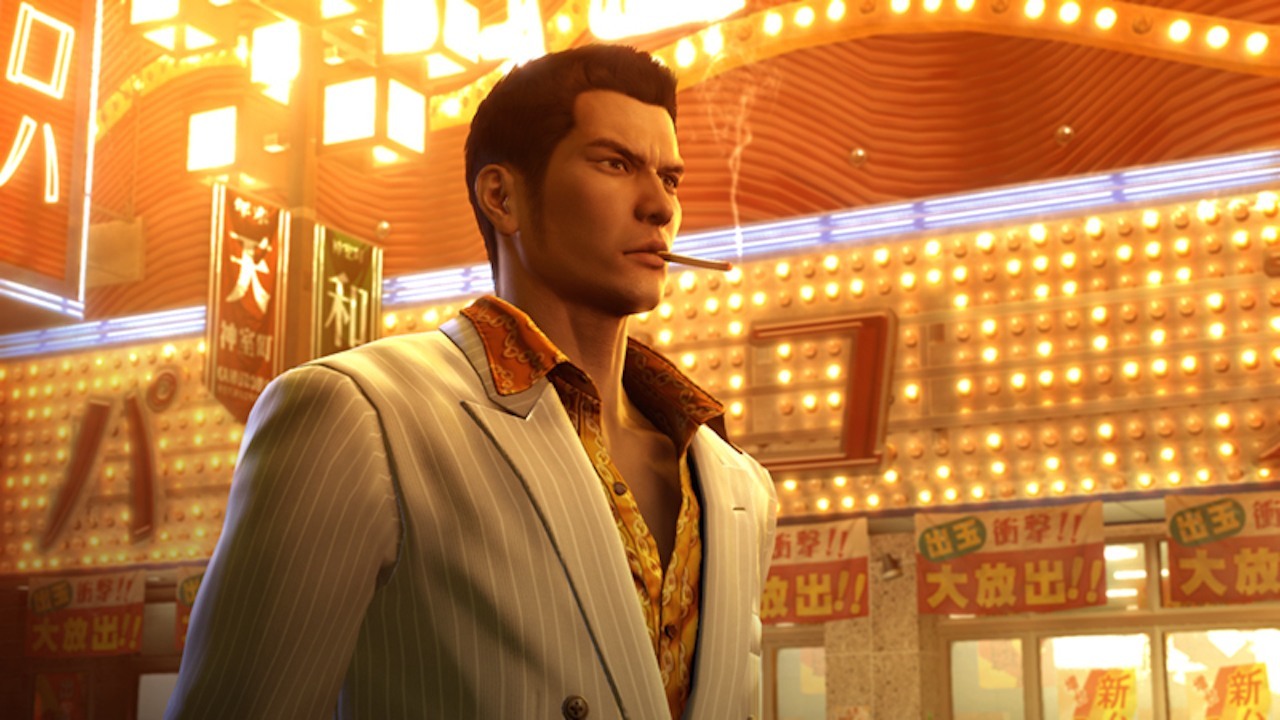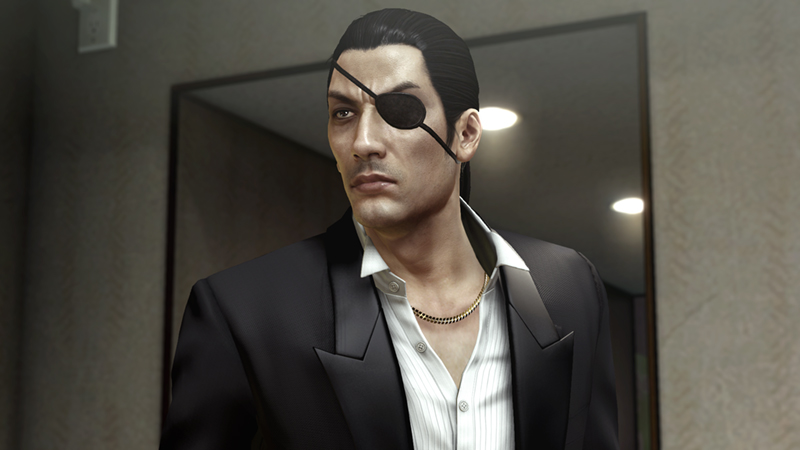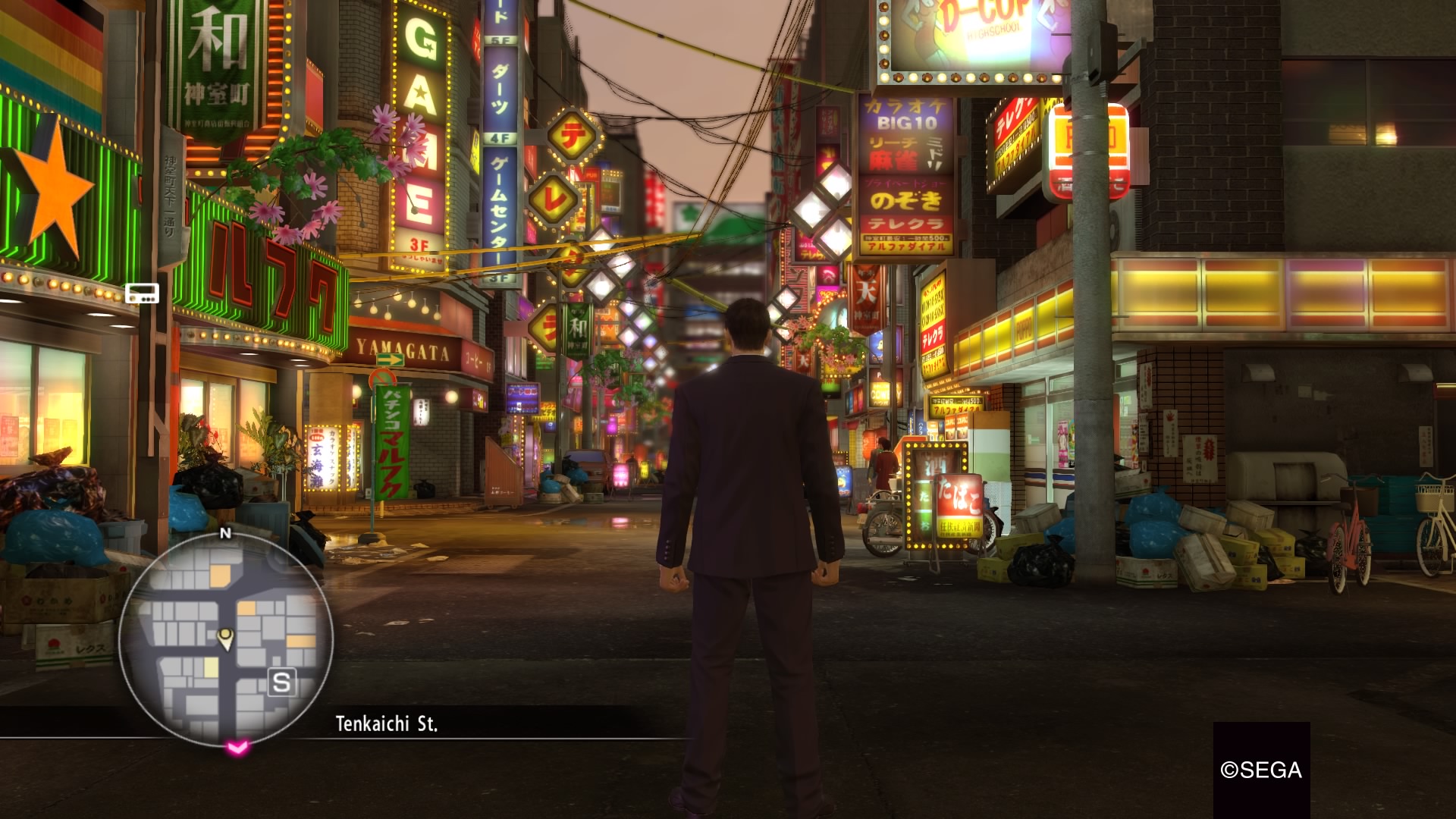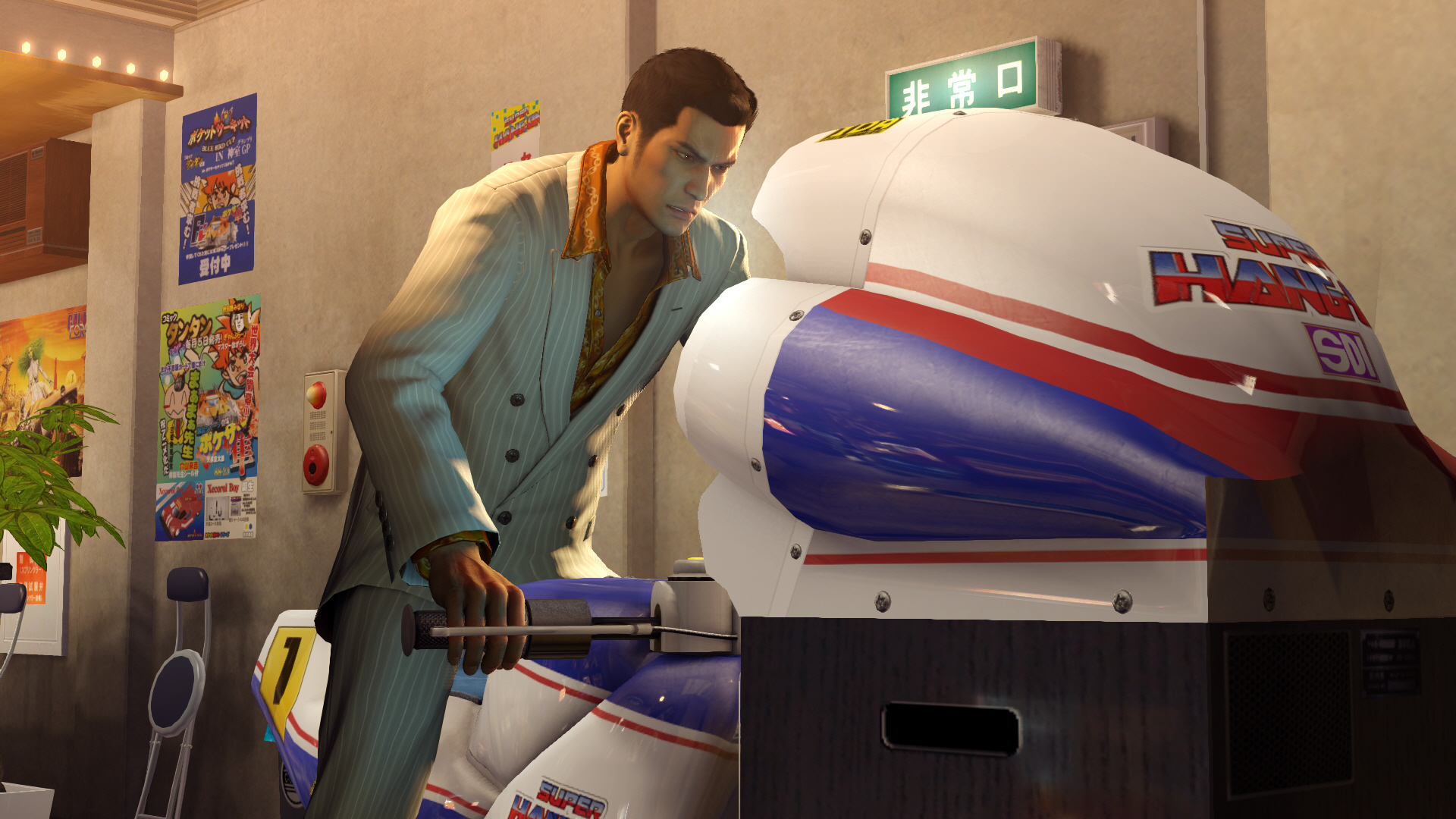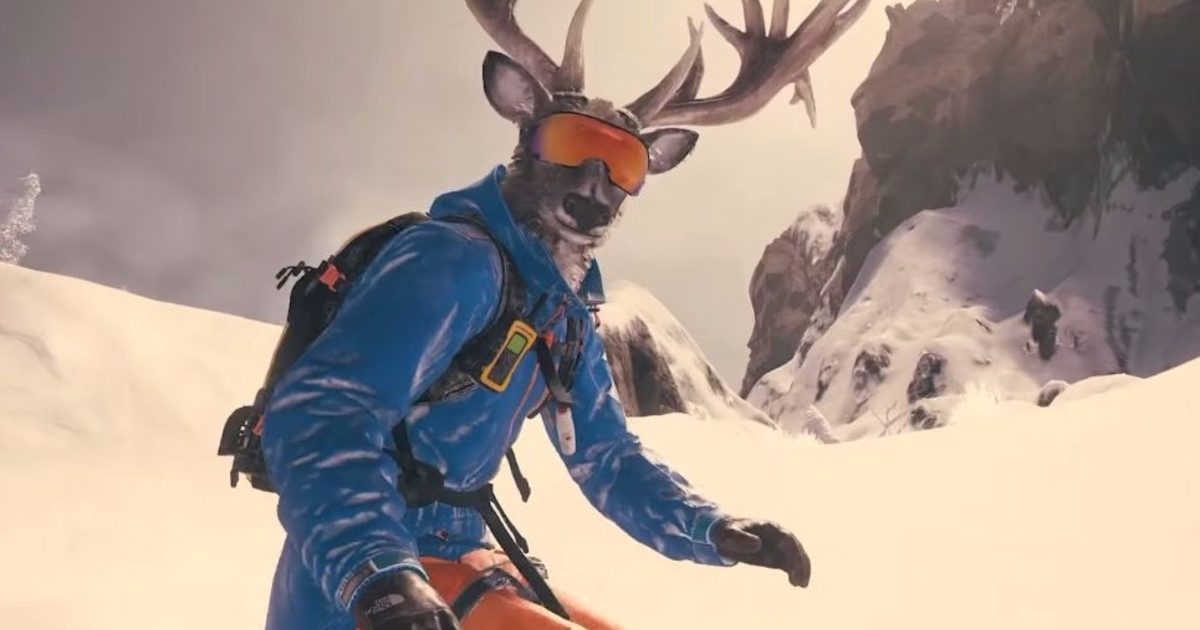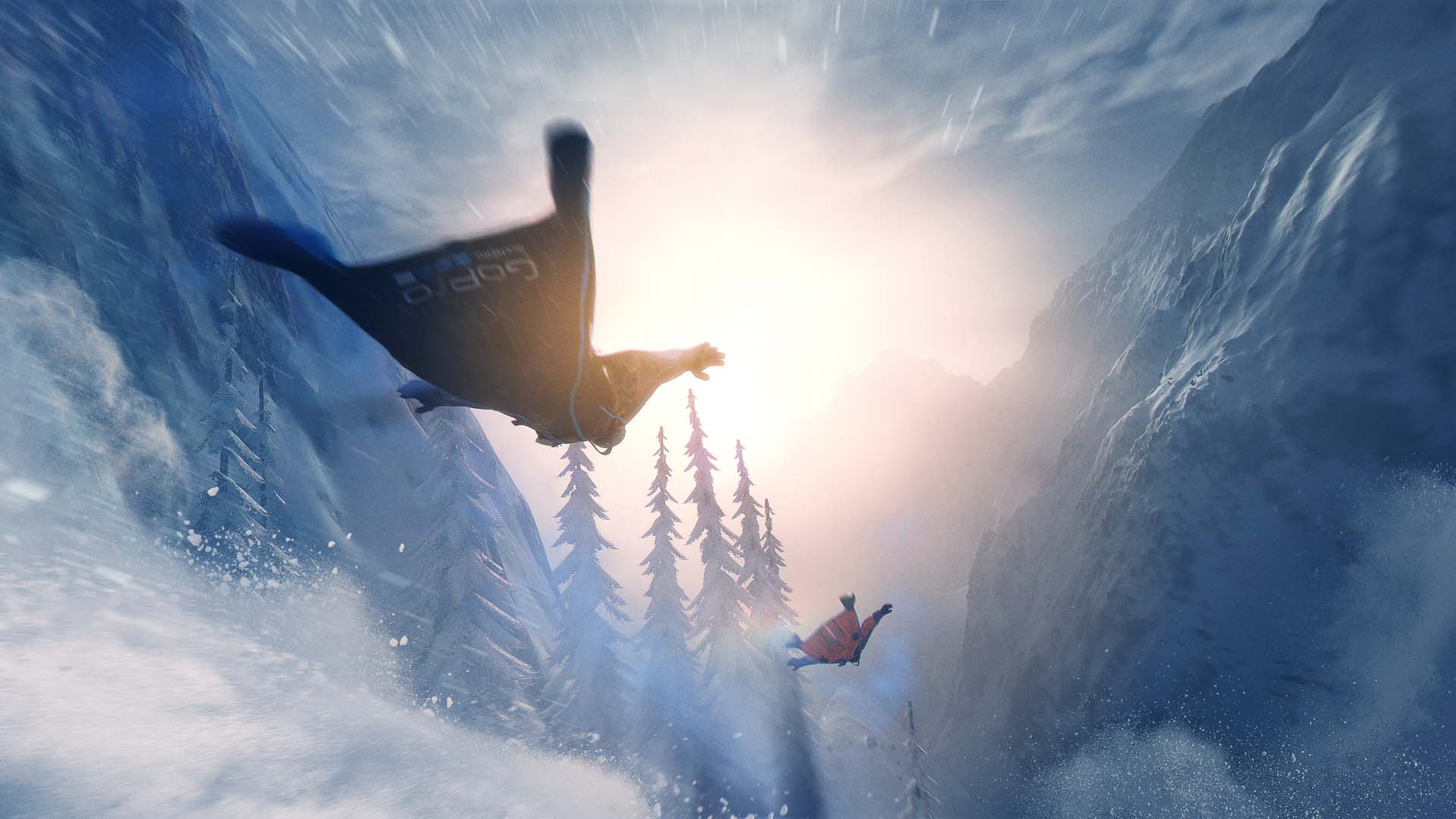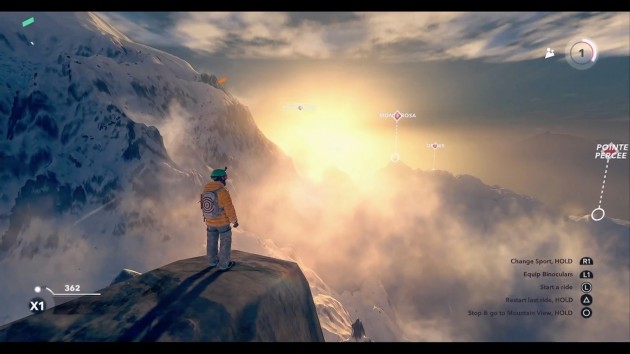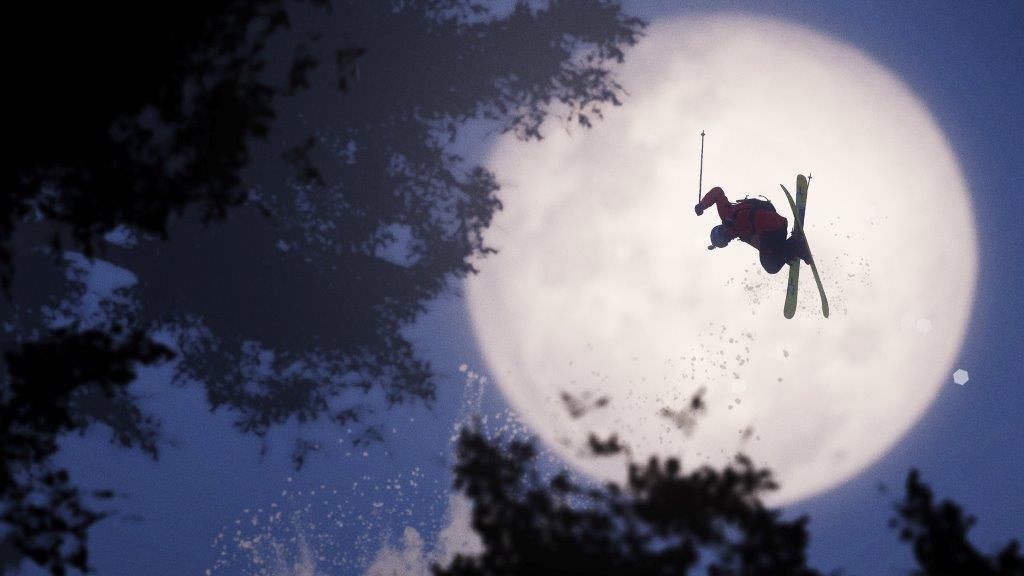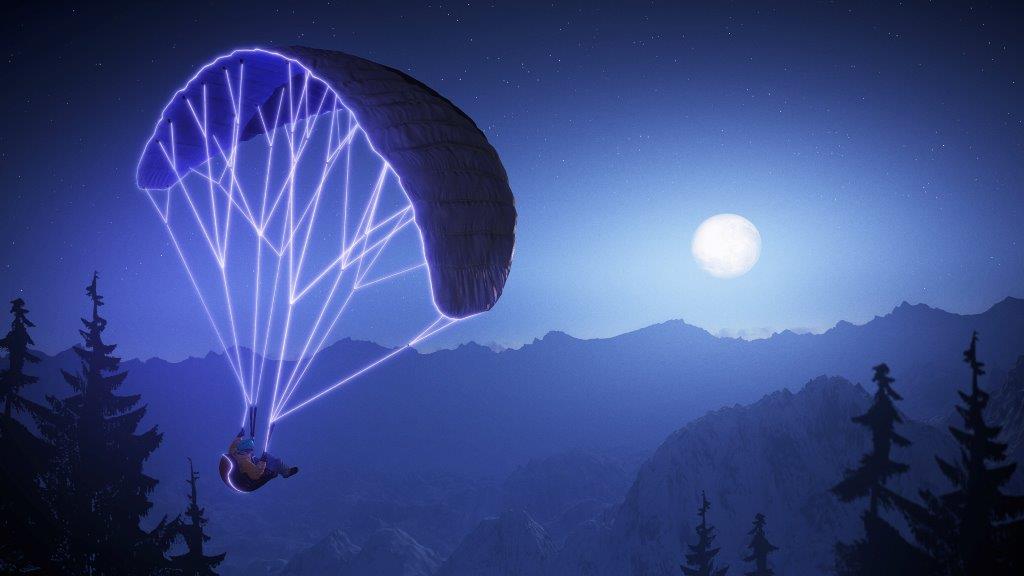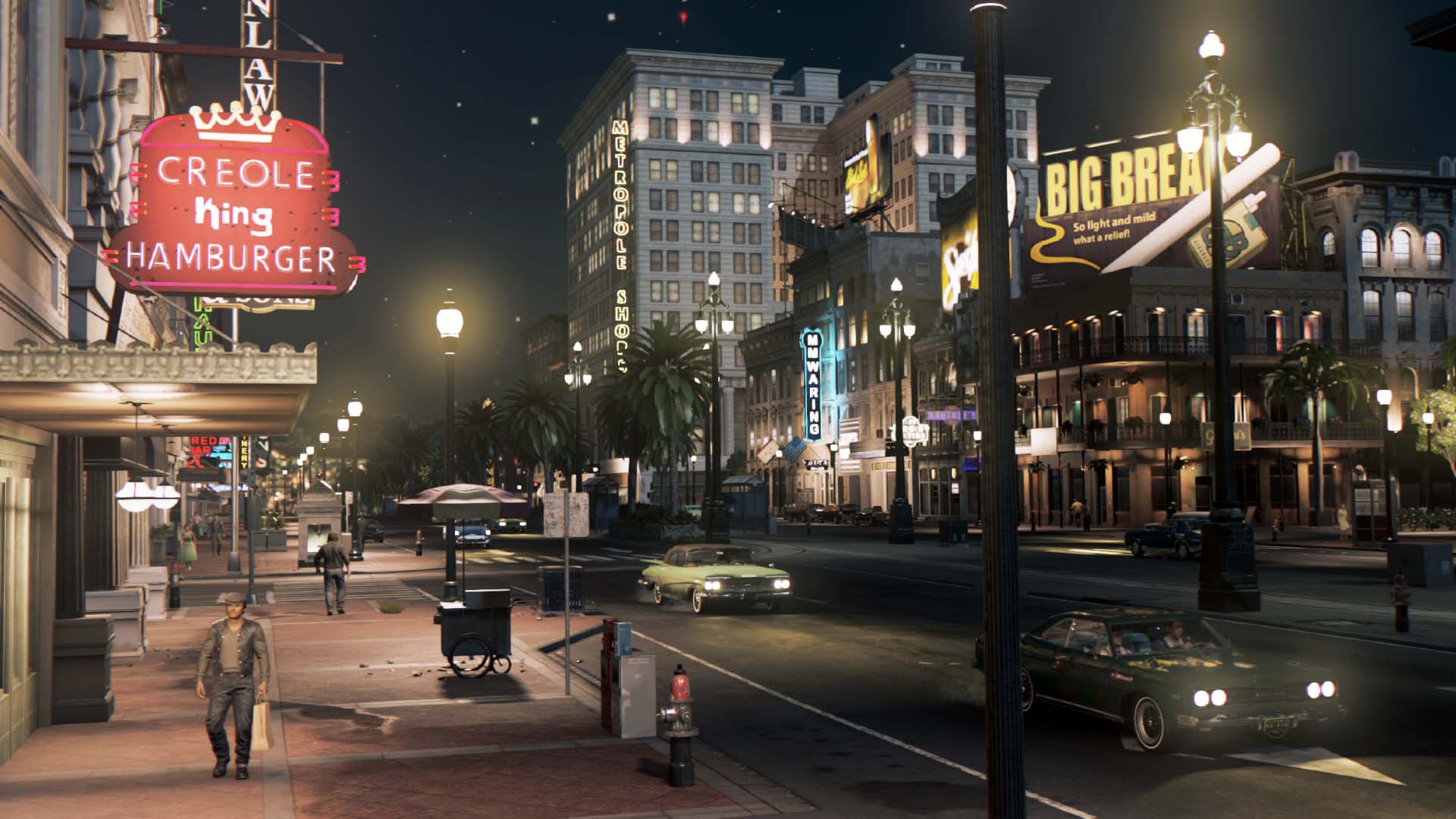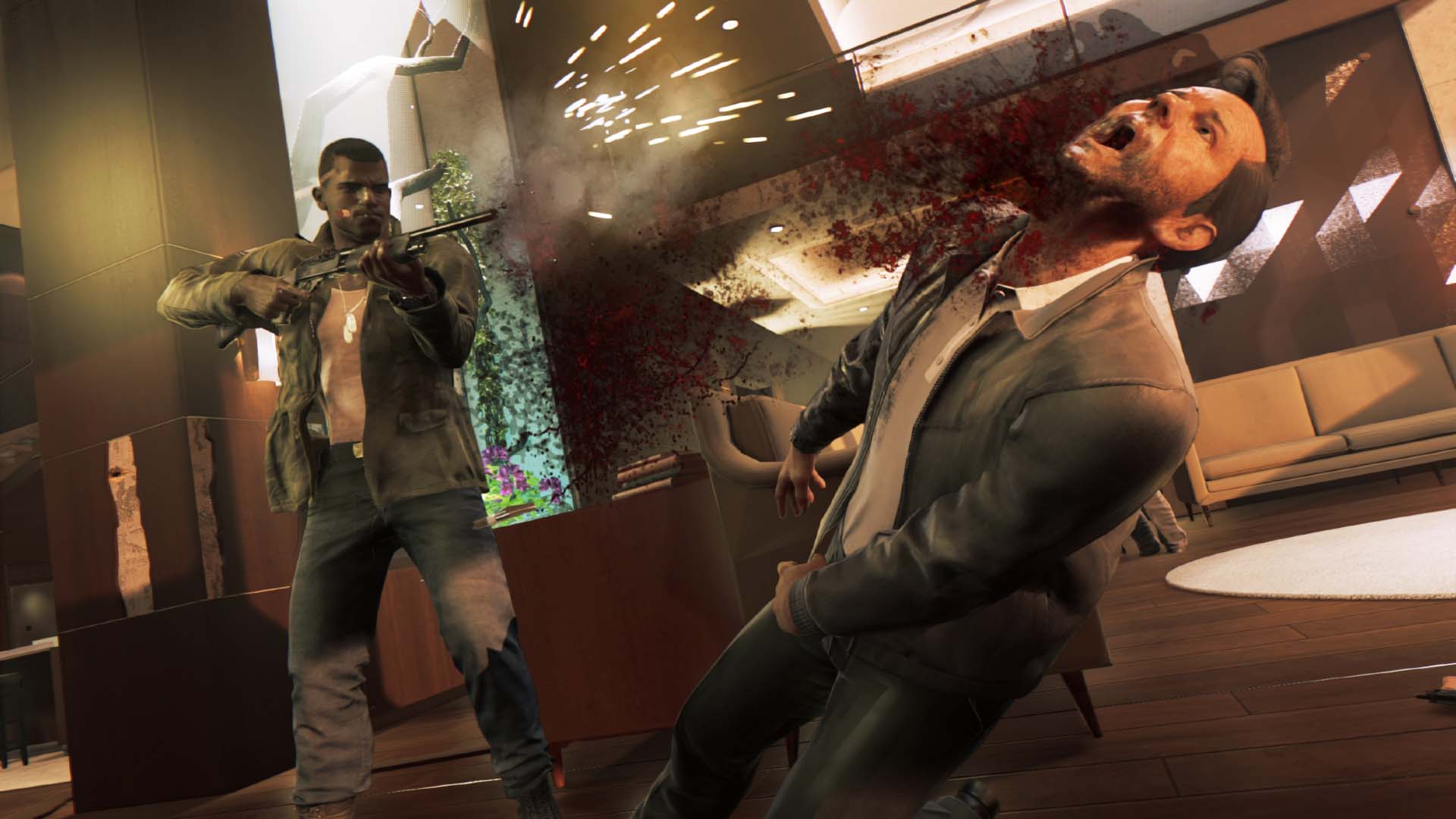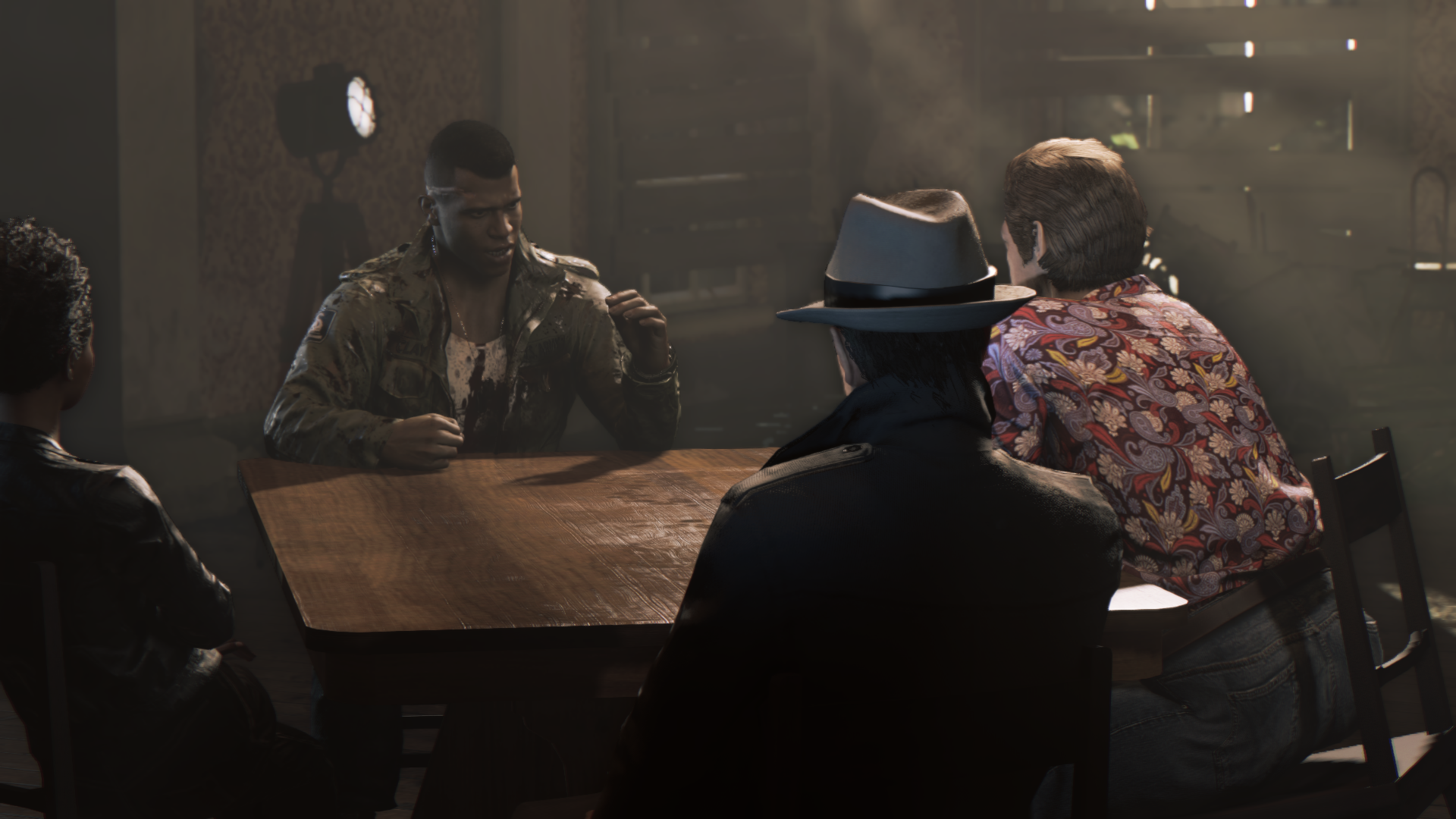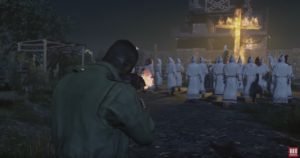Don’t be fooled by the whimsically beautiful, hand-drawn aesthetic Smoke and Sacrifice. Set underground and spanning multiple biomes, Smoke and Sacrifice is a wonderfully crafted survival adventure with an engaging story and an infuriatingly steep learning curve. This game goes from cutesy and innocuous to immediate psychic scarring in the span of its own intro scene. How is that even possible? Might have something to do with the player taking an active role in sacrificing the main character Sachi’s first born child upon an altar surrounded by sun-worshiping religious acolytes. Maybe.
The only reason I decided to play this game, out of a choice of several others, was purely visual. So, being the habitual lazy mug I am, instead of doing research along the lines of watching the entire YouTube video, reading about Solar Sail Games, or, you know, doing literally anything at all before just jumping into this, I… just jumped into this.
And once you jump in, the real nightmare begins. Flash forward seven years; the lights go out, the smoke pours in, and the monsters come into the village. Taking control of Sachi, the player will use the ensuing chaos, wrapped in a thick blanket of panic, to check out the temple and alter where Sachi gave up her child, only to be teleported to a hellish landscape of terror and smoke shrouded danger.
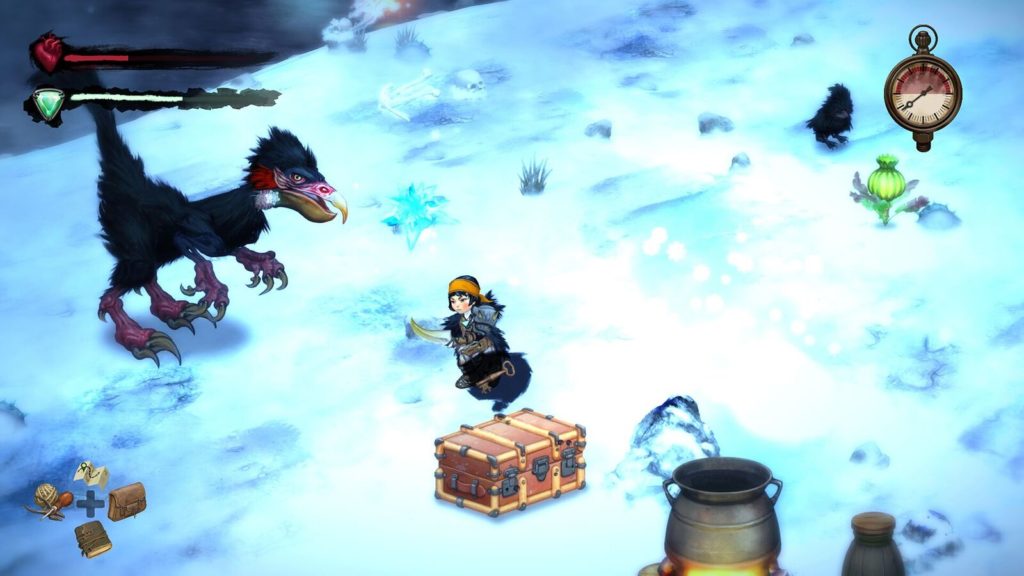
Look, I’ll be the first to admit that I’m not the brightest lighthouse on the coast, and I generally like my games fast and simple. But, had I taken the time from the outset to pay attention to the background environment, I probably wouldn’t have died 20 something times before making any significant progress in my first play-through.
Without the player ever being involved, the ecosystem of this world carries on with it’s bad self. Polyps (little jellyfish enemies) mate and produce offspring, plants swallow glowbugs and emit protective light, anglermoles eat fireflies and belch flames at you. Why does any of this matter?
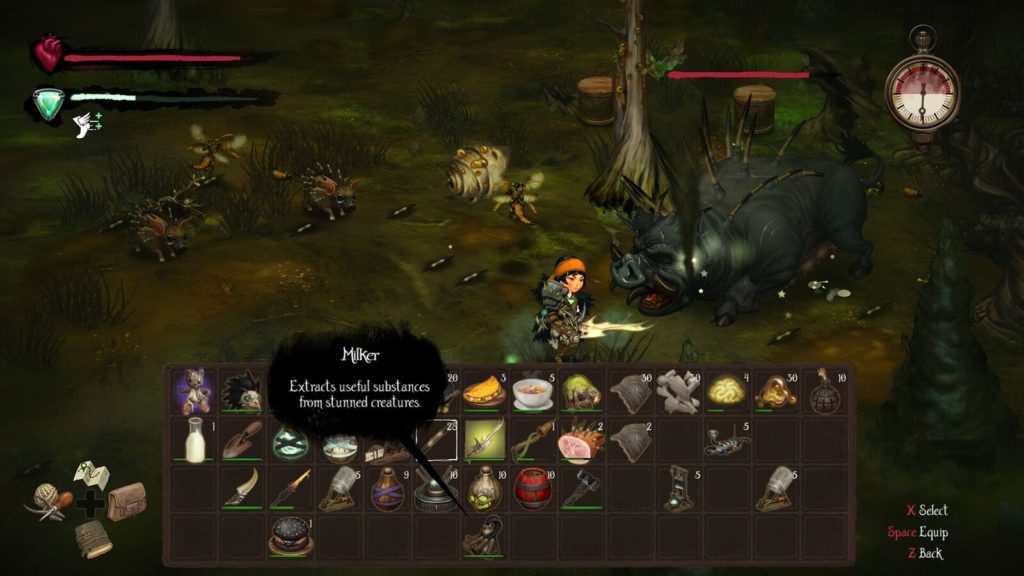
Actual transcript of this fight: F***. This game is hard… No wait, I got it… Nevermind, I’m dead again.
See that monstrosity in the picture up there? That was the first big enemy I was tasked to kill. And how many times did he annihilate me instead? An embarrassing amount. It wasn’t until I accidentally brought him too close to that wasp nest that the coin finally dropped. The wasps killed the boar, I killed the wasps, and I then applied that lesson to every other big-bad in the game. Paying attention to the environmental interactions are the key from taking Smoke and Sacrifice from impossibly frustrating to an enjoyable experience.
Even the sound design is amazing. Flapping insect wings, gnashing teeth, screen rumbling explosions, and prosaic music all contribute to a perfect symphony to accompany you on your quest.
Of course, no game is without its flaws. However, in this particular case, for Smoke and Sacrifice they are few and far between. Sometimes items you try to pick up are inaccessible because of the placement of permanent objects and how items drop. Also there’s… um… well, actually, that’s about the only bug I found. Other than the wasps.
Fans of diesel-punk, the crafting elements of Ark, and games like Penny Arcade’s On the Rain Slick Precipice of Darkness should definitely give this one a go. From perfect visuals and incredible audio, not a tedious amount of grinding, Smoke and Shadow is a visually perfect game with incredible audio and a plot that gave me actual nightmares. I cannot wait to play more.
PS: SAVE.
PPS: SAVE OFTEN.
Editor’s Note: This review was written in conjunction with Jon Calise, a contributor to Sub Cultured. You can find more of his writing on his personal blog, Petting Zoo Rejects.
The Yakuza series started back in 2006 for all of us here in the West. Twelve years later, the game is putting out its sixth numbered entry and wrapping up the entire Kazuma Kiryu saga. The legacy of this series is steeping in memorable characters and most importantly, good storytelling. Yakuza 6 takes twelve years of lessons learned and combines them into one ultimate package, creating an outstanding finale.
Yakuza has been at the forefront a lot over these last couple of years. With the series prequel Yakuza 0 and the Kiwami remakes of 1 and 2, it’s an excellent time to get into the series. Even if you refuse to put in the numerous hours it would take to complete the whole series, newcomers will find themselves very informed with the characters and world of Yakuza. Thanks to the assortment of flashbacks, previous game synopsis via the game menu, set ups, meet and greets and what-have-yous, the game will do everything it can to keep new players up to date with the story as a whole. Now of course if you are a returning fan you will get a much more elevated experience, having intimate knowledge of the previous games. Don’t let the number fool you though, this is a fine place to start up your adventure with Kazuma Kiryu.
Strap in for long, dialog heavy cutscenes. Every few steps you make, and every bit of progress is bookended by lots and lots of exposition. Not that we’re complaining! Newcomers might be thrown off a bit but longtime fans will feel right at home. Think Metal Gear Solid length cutscenes here – the kind where it’s just better to put down the controller and enjoy the show while you get wrapped up in the game’s incredible narrative. Familiar faces will pop up, and while not every cast member gets big moments, I never felt cheapened by the omission or lack of some of my favorite supporting characters from previous games. Story and characters are always at the forefront of this series, and The Song of Life is no different. The focus on narrative may feel slow to some, especially in the early hours of the game, but there is a lot to set up and explain before the real meat of the adventure begins. Those excited to put a hurt on people, will need to practice a bit of patience as they work their way into some of the more consistent action.
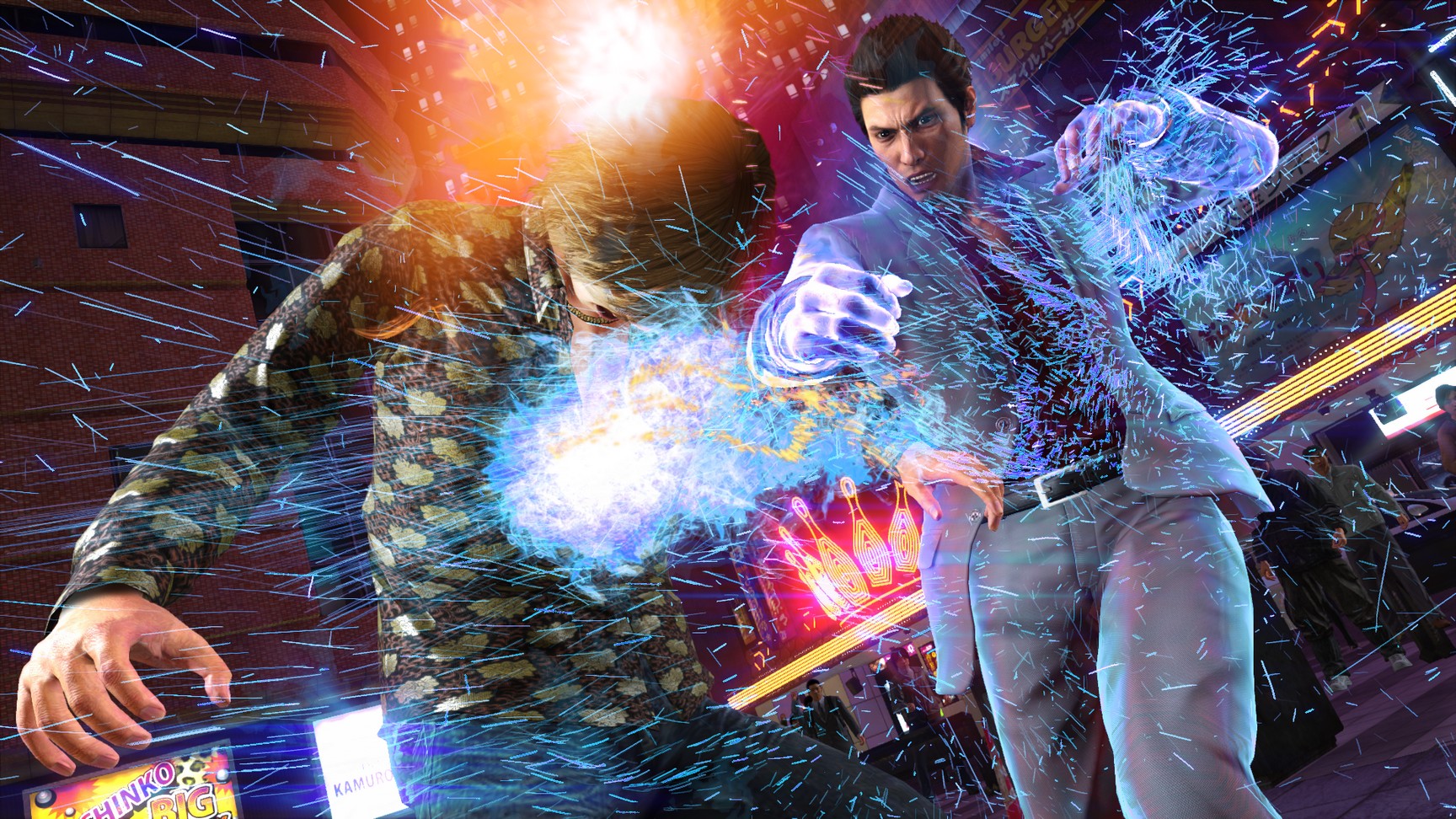
Graphics are obviously the best they have ever been in Yakuza 6. Sure, it might fall just short of other open world games from this generation, but the character models are a real standout. Even patrolling around the city at night can be a great visual feast, as the neon signs of Kamurocho reflect off the streets. Character animations are good as well, as a nice natural feeling is given off as character talk, walk, converse, and interact with one another.
Coming back to the city of Kamurocho is always a treat since we’ve been stomping around on these grounds for 12 years now. While reusing locations and assets are considered negatives in most games, in Yakuza 6 this works and is most welcomed. Kamurocho is Kiryu’s home, so the familiarity the city brings works well with player immersion. The passing of time has changed Kamurocho in many ways. Sure buildings may be where they used to be, but new shop locations keep the player exploring as things are as modern as ever. Playing Yakuza 0 and playing Yakuza 6 offers two very different versions of Kamurocho, despite it being the same city, and is a true example of how time morphs all things.
Modernizing everything as time passes is a theme in the Yakuza story, mechanics, and aesthetic. Gone are the scattered phone booths and in turn, the archaic saving system that goes along with it. Now you’ve gotten with the times and have a cell phone with a generous autosave system. This really streamlines the game as when you are winding down with your playthrough, you don’t need to worry about how close a save point is. The save point is always in your pocket for you to manually save or the autosave feature will kick in upon almost every time hitting the “start” button.
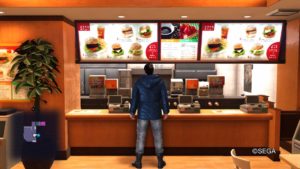
Eating and drinking are as important as ever now. These mechanics have always been in previous games, but now it’s a big way to get experience points. Pairing multiple combinations of things on the menu will give you increased boosts of experience. A lot of my money went to spending on food, and finding the right combos was fun, as I monitored my hunger meter. You don’t ever starve or go hungry and the game does not require you to eat, but there it is much fun to be had by going into new restaurants, seeing what they serve, and trying to get the most out of your money. To deplete your hunger meter, you just need to run around and fight. It is pretty easy to nab a meal after every encounter, thus maximizing your experience gained.
Experience can be used in five different categories, with each category unlocking new skills and permanent buffs. Choosing how to shape your character and what to spend points on is up to you, but don’t be surprised if you have everything unlocked after your run time of the game. You also have control over a few item slots. As you buy and pick up wearable items, you can equip them to further increase specific stats. I found changing things around in my inventory made some fights much easier. Don’t worry too much about it though, because the difficulty, like other Yakuza games, is very low.
Substories are back, and in plentiful amount. The Yakuza series has always done a great job at committing to a balancing act of extreme goofiness along with the drama of a real soap opera starring hardened gangsters. One moment you are fulfilling a mission that has some emotional payoff, the next you are fighting ghost pirates in a cemetery. It’s all very surreal. It has to be a hard line to walk because I never feel like my immersion breaks while doing some of the more sillier tasks. Everything feels like it belongs in this world.
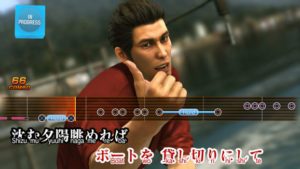 There are so many other side activates to do as well that will distract you from the main adventure. Karaoke is back, going to a cat café, visiting shrines, having a drink with friends, shark hunting/fishing, and of course, working out at the gym, putting a baby in a good mood, are some of the things you will find throughout the world. The main plot may be the priority but you always have time for a small detour in one of these many side attractions.
There are so many other side activates to do as well that will distract you from the main adventure. Karaoke is back, going to a cat café, visiting shrines, having a drink with friends, shark hunting/fishing, and of course, working out at the gym, putting a baby in a good mood, are some of the things you will find throughout the world. The main plot may be the priority but you always have time for a small detour in one of these many side attractions.
We also get a gang creator. You will be recruiting and locating an assortment of gang members to join you in a new mini game. It functions like a tower defense game in that you are populating troops by expending points that you gain from actions or over time. It is a good time waster but it is not the most engaging mini game in the Yakuza series. Leveling up troops was simple but fun. I still found myself wasting a few hours with it, so something about it kept keeping me coming back! Watching your troops level up, and putting them in the right chain of command was rewarding. I will say that there was one other mini game I found that was just outright strange. There are online chat rooms with babes to fake talk to, and these mini games are awkward and weird. You spend time doing button prompts (quick time events) while talking to a real (live actor) lady who may or may not be stripping. Thanks Japan!
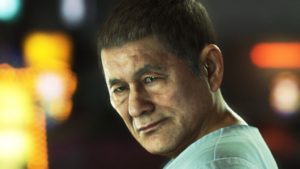 One of the biggest takeaway for me was the inclusion of actor, director, and icon, Beat Takeshi. You may know Takeshi Kitano from other Yakuza films or TV (unrelated to this game). His major works are: starring in Battle Royale, and directing the movie Brother, among many others. Beat Takeshi offers a very memorable character in the game’s narrative, and every time he came on screen it made me forget I was playing a game, and trick me into thinking this is one of his MANY Yakuza movies.
One of the biggest takeaway for me was the inclusion of actor, director, and icon, Beat Takeshi. You may know Takeshi Kitano from other Yakuza films or TV (unrelated to this game). His major works are: starring in Battle Royale, and directing the movie Brother, among many others. Beat Takeshi offers a very memorable character in the game’s narrative, and every time he came on screen it made me forget I was playing a game, and trick me into thinking this is one of his MANY Yakuza movies.
The story in Yakuza 6 The Song of Life here revolves around one of Kiryu’s children going missing. Kiryu oversees an orphanage in which he is responsible for many kids. The narrative begins with one of the children leaving the orphanage and losing contact. Kiryu, hot off of being in jail, must track her down. This leads him back to a Kamurocho which is now overran by Triad who are going to war with the local Yakuza. These events drag Kiryu back into his old life, and guides him towards a new location, Onomichi in Hiroshima. This somewhat simple mystery turns into a complex narrative with an third act that pays off in some very big ways. Longtime fans of the series will get one of the best endings any game series has ever had, and leave you fulfilled in every way. Few games in the industry can claim such a feat.
The overarching themes of fathers and son, and what parents are willing to do for their children as well as what children are willing to do to gain acceptance and approval from their parents, are powerful and meaningful. These themes give the game’s narrative much life and weight. The different types of relationships shared between all the parents and children showcases a world of gray morality. alongside this, it juggles a tale of old versus new. Kiryu is an old school Yakuza, from a different time, and things have changed within the organization. These changes and this younger guard who are taking over, act as another driving force in the narrative. Time again has changed something we once knew, morphing it into something unfamiliar.
Yakuza 6 feels better than ever. I suffered from zero crashes, and if I witnessed any glitches I was unaware of them. I did not suffer from much, or any framerate slowdown. The loading screens are minimal and short, really keeping you engaged and in the world. The combat itself is smooth and putting the hurt on people never gets old. You feel pretty powerful at the start of the game, so by the end you are practically a one man army. Gone are playing with other characters, and swapping your fighting style. While these may seem liek steps back, it actually focuses the mechanics and the story, and keeps you right in the shoes of Kiryu. All of the fighting and exploring are complimented with a great soundtrack. Lots of guitar riffs over synthy harmonies fits the tone well, but it is not unlike previous entries. I will say a particularly jazzy inspired song in the new area of Onomishi is a great standout.
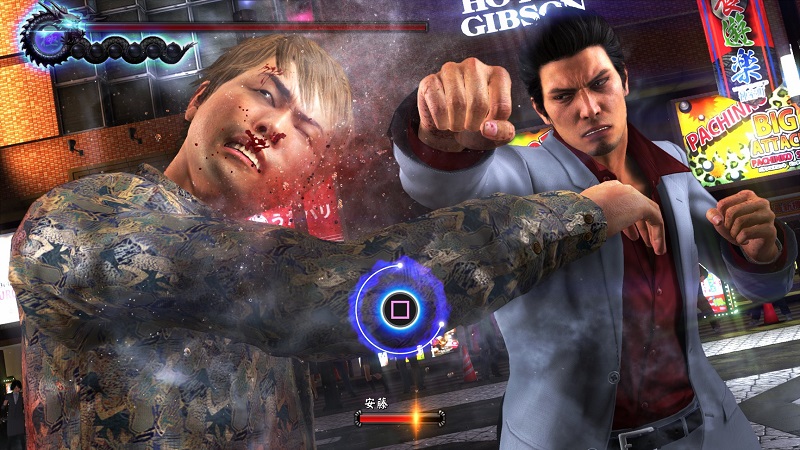
Yakuza 6 The Song of Life ended up being about a 21 hour experience for me. I did plenty of side stuff and it felt like I took my time. This run time makes the game feel much shorter than previous titles, but be aware that there was easily 10 more hours of side content for me to get into. Despite being plenty distracted there was much I did not get to see or experience, which will make going back into this world all the more of a treat! There is so much being left unsaid about Yakuza 6. The game is wrapped up in an incredible mystery that unravels like a piece of infinite yarn. I always wanted to know what happens next, and no point ever felt like a good stopping point. Yakuza 6 does the impossible and wraps up things in such a satisfying way, that I felt I got everything I could out of these characters and out of the narrative. Twelve years is a long time to stick with the same cast of characters, but no moment ever went wasted, each acting as its own puzzle piece to the greater narrative of the series. You won’t find a more consistent quality series, anywhere else in the industry.
 “Gaming does not respect my personal time,” is a mantra I have been saying for weeks now. We truly live in the best time to game, and this may be among the greatest years of releases in the whole industry. That being said, I want to make a declaration:
“Gaming does not respect my personal time,” is a mantra I have been saying for weeks now. We truly live in the best time to game, and this may be among the greatest years of releases in the whole industry. That being said, I want to make a declaration:
I want to enjoy my other hobbies too, but The Legend of Zelda: Breath of the Wild, and Horizon Zero Dawn wont let me.
Jesting aside, it is not often that we are hammered with such a collection of releases in Q1. Sure as the years have gone by, big Q1 releases have become more and more commonplace. However, I don’t think I have ever seen it to this extreme. Let’s break 2017 down a bit.
The year started off with January’s smash success Resident Evil 7 as the big must see attraction. February boasted For Honor, and PlayStation’s two new exclusives, Nioh and Horizon Zero Dawn. If you think it stops there well buckle in for March’s The Legend of Zelda: Breath of the Wild, the release of Nintendo’s newest console, the Nintendo Switch, Neir, and Mass Effect Andromeda. Oh, but you can’t stop planning for after that because April will see Persona 5, with Prey also coming out in May. Every single month has a can’t miss title that you…well…can’t miss!
Among all the listed titles above, two are going to battle it out in the same week, head to head, for our free time. Both games are large open worlds, with lots of inspirations from previous open world games like GTA, The Witcher 3, and Skyrim. They are also both an exclusive pillar in two different franchise lineups. That’s right, it’s time to break open the time seizing terrorists: Nintendo’s The Legend of Zelda: Breath of the Wild, and Sony’s Horizon Zero Dawn.
Horizon Zero Dawn will launch February 28th, and after the collective praise of every review copy of the game, it seems like it is one not to be missed. However, this title is going against a juggernaut of a franchise, the widely known Legend of Zelda.
The Legend of Zelda will be releasing with its new hardware on March 3, leaving just about 3 days in between the two huge releases. How does one even begin to choose what to put time into? This is a battle of old versus new, known versus unknown, and of course, Sony versus Nintendo.
The lifelong gamer in me is of course screaming for Legend of Zelda, as I know that it will be a nice nostalgic trip into a franchise I love, all the while showcasing that it has been paying attention to other games, and what would be best to take inspirations from. The other half of me who loves all things new is of course hollering for some Horizon playtime. A normal person would just choose one or the other, but in my constant battle with FOMO (fear of missing out) I have chosen to step up to the Tale of Two Open World’s challenge to tackle both simultaneously.
Now if you have a lick of sense about you, one game will suffice. Only occupying one world will guarantee an extra layer of immersion as you aren’t constantly unlearning mechanics from one game to relearn them in the other. I have high hopes after plenty of investigating that both will offer vastly different experiences despite being mechanically similar.
GAMEPLAY
Sure, two big titles from competing franchises that are both 3rd person adventure coming out with only a 3 day gap, an open world format, and each boasting a skilled archer as their hero doesn’t necessarily mean these titles are similar in every way.
Except both games will have a map unlock system via towers, not unlike Assassin’s Creed or Far Cry. Each game will have a crafting system, as well as a focus on hunting local fauna in as well. The Legend of Zelda and Horizon Zero Dawn are both sure to be north of 40 hour experiences, depending on how deep you explore all the content. In those hours you will notice that they both have a focus on combat and exploration, as the world unfolds around you.
STORYLINE
If the mechanics alone aren’t enough to convince you of the similarities, take a look at the plot; Zelda and Horizon both focus on immersive worlds that have suffered from some sort of calamity, a mystery that you are slowly uncovering in the story. In Horizon, the player occupies a world that was once theirs, taken by nature and guarded by a slew of animalistic robotic guardians who occupy the lands. In Zelda, the player occupies Hyrule, a world that has suffered a fall of civilization… where robotic guardians now live.
I fear that playing Zelda and Horizon simultaneously would create a dance filled with much toe stepping. Obviously each game will be different, but they will feel similar in terms of moment to moment gameplay and mechanics. That is not a slight on either game, but more so just the realism of the situation. While they are similar, we don’t believe that one is a copy of the other, and at this point one is not lesser than the other. Their similarities are not a negative aspect. If anything, the immersive experience that both these titles offer showcase that the open world genre, a genre constantly being called “overwhelming, overused, and oversaturated,” is in fact healthy and still ripe with opportunity for churning out Game of the Year contenders.
BUT WHICH DO I CHOOSE?
Either title you pick will be its own experience, and a great one. Ultimately, it comes down to what is speaking to you more right now in this moment. The battle of old versus new is a tale as old as time, and in the end it will be your choice. The main question you will have to ask yourself is what type of experience you are looking for.
The Legend of Zelda has 30 years of cannon, references, characters, and locations to draw from. Zelda will surely rely on the old tried and true methods as it tugs on our strings of nostalgia, but don’t count out its innovations as well. With new mechanics such as weapon/armor drops, cooking, and horse breaking, the experience is sure to feel fresh, and unlike any Zelda you have ever played before. It will dance the line of new and familiar.
Zelda also has the novelty of launching with a new system to explore. You can always snag The Legend of Zelda Breath of the Wild on the Wii U, but the real attention is being shifted towards their new system, the Switch. It makes this release that much more special that we are getting this a Zelda with new hardware.
Horizon on the other hand is setting up an entirely new world and isn’t restrained by anything from the past. It is creating its own foundation for a potential new franchise, and that in itself is very exciting. Exploring a new world like Horizon has will be a main draw as you figure out the nuances of this storyline.
Horizon launches on the current PS4 as well as the PS4 Pro systems. If you have a PS4 Pro, this is the game that tests the true limits of that new hardware. Because of this, Horizon may be the best looking game on the market… in the history of ever. While Zelda players on the Switch may be distracted with new hardware, Horizon players will already be immersed in this new world.
This will be a hard decision for some of you that are in the “either or” camp. Thankfully, I’m evading this eternal debate in turn for conjuring issues of my own based on that decision. See ya later free time and social life! For me, I will have two or three solid days with Horizon before the Switch launches that Friday. Come Saturday, what will end up sitting on the shelf, and what will end up getting my full attention? The overzealous gamer in me says, “You will beat Horizon before Zelda comes out,” but the adult in me says, “Ain’t nobody got time for that.”
What will you be choosing? Do you plan on playing both? Don’t forget to check out our Twitch channel, where we will be streaming both games!
Though the Yakuza series has been around since 2006, when Yakuza eventually came to the West, it had it’s share of problems. Overrun with horrible dubbing and poor marketing strategies meant that the series never received the fair chance it deserved.
Fortunately for fans of this franchise, the Yakuza series in it’s entirety was a mega success in Japan, so Sega continued to produce more games in their mainline series for the next eleven years. With this expanse of time the game finally found it’s stride, growing in quality, perfecting the storytelling and character development, and really making a name for itself in the open world genre.
While the Yakuza series takes a lot of inspirations from beat ’em ups like River City Ransom, it carves out its own identity in this 3D, open world, story focused action game. Yakuza 0 is the culmination of everything Sega has gotten right with the series, and the best part is, you don’t have to play any of the other games to appreciate this one.
In the timeline of the series, Yakuza 0 takes place at the very start of the whole Japanese crime focused epic, subsequently becoming it’s own origin story. The series always stars the gruff but easy to cheer for Kazuma Kiryu. Throughout the series, we know this character as becoming a force in his Dojima Family clan of the Yakuza. Here we find our favorite beat ’em up badass is much younger, much brasher, and not quite the Yakuza we have come to know and love yet.
Yakuza 0 takes you on a ride with Kiryu as he is set up and accused of murder on a cash collection job gone bad. The rest of the game sees Kiryu attempting to clear his name as his once colleagues turn into enemies.
In a new deviation, the player will share the gameplay time with another main character, a series favorite named Goro Majima. Throughout the arc of the series, the player never learns too much about Majima – other than he has impeccable style, he takes care of business, and it’s always incredibly exciting whenever he shows up. Now the player gets to embody the man at the start of his crime career with the Yakuza.
When we meet Majima in this origin story, he is running the hottest Cabaret in town as part of his exile from his Yakuza family due to a botched job. Though in exile, Majima is given a chance to redeem himself and with a job handed to him by a Yakuza elite, but the job is a hit, and murder just might not be Majima’s game.
The narrative in this series has always been the star of the show, filled with amazing characters and well written melodrama. It plays out in a lot of moments like a Japanese soap opera about crime. Every other chapter has the player switching between the two main characters. With 17 chapters in all and every chapter as long as you want it to be thanks to all the side missions, Yakuza 0 can easily take you over 40 hours to complete.
Yakuza 0‘s plot revolves around a piece of land called the “Vacant Lot.” This piece of land is important to the rival Yakuza families as whoever ends up owning the lot will get a big break in the overarching Yakuza family. This begins a series of back stabs, betrayals, and switcheroos, that will keep you constantly guessing as to who is friend and who is foe. It is a long time before you even realize that Kiryu’s and Majima’s stories will even intersect. They seem so vastly separated that you would never guess that they would meld together so seamlessly by the game’s end.
While the player can take control of both Kiryu and Majima, the two characters play completely differently, both with their own styles of fighting. Kiryu and Majima each have three distinct styles that they can switch to on the fly, and all six of them are important to use at certain times depending on the type of enemies you face. These battle quickly become a dance of calculated stance swaps as you bring the pain to all that approach you.
The difficulty, while never hard, is always fun; especially as you are able to interact with items in the environment to use as weapons. You see a parking cone? Pick it up and slap somebody. Want to go a little bigger? Try picking up an entire Vespa and slamming it into your foes.
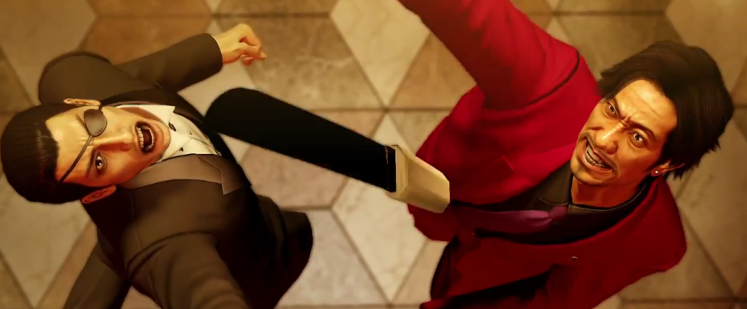
The moment to moment action is always present as “random encounter” populates the screen. You’ll notice gang member, delinquents, and men in black all over the streets waiting for you to interact with them, or sometimes they will run up to you and pick a fight. Maybe you actually want to brandish a blade or bat by taking them off incoming baddies or accumulating them through stores and the black market weapons trade.
When you are not fighting, you are exploring the 1988’s versions of fictionalized recreations of Tokyo’s Kabukicho Shinjuku Golden Gai areas, and Osaka’s Dotonbori areas. Kiryu is in the Tokyo area, while Majima is in the Osaka area. Each town feels different and has their own assortment of side missions that are called “Sub-Stories.” These stories have you interacting with a collection of interesting characters, ranging from perverts in their underwear, to arguing couples in need of third party advice. Yakuza 0 is filled with over 100 of these Sub-Stories, and each of them range everywhere from hilarious to heartwarming.
You can also participate in a series of mini games, such as karaoke, dancing in a club, buying and selling real-estate, running a cabaret club, going to a video girl club (as creepy as it sounds), among so many other little activities to lose your time in. None of these things are required to progress the story, but they all offer a nice respite away from all the drama of crime lords.
Sega has a very strong franchise on their hands, and it seems with each passing entry it gets a stronger reception in the west. This is no Grand Theft Auto clone, this is a game series that has made its own mark, and deserves all of its accolades. If you have never played the series, there is no better time than now, as Yakuza 0 is the first event to happen in the timeline. Later this year will see the release Yakuza Kiwami, a completely remade version of the first game.
Yakuza 0 is a fantastic beat em up game, with a bevy of RPG elements that help differentiate it from other open world games. So if you need a strong crime drama story, with excellent action mechanics, then look no further to the Yakuza series, and make sure you start it here with Yakuza 0.
Long has the winter extreme sports genre laid dormant, until Ubisoft awakens a game like Steep from its creative slumber. The team over at Ubisoft does a lot of good with Steep, an open world mountain simulator where you get to, snowboard, wind-suit, paraglide, ski, and walk across a frozen paradise. While the team nails the sense of speed, there are some shortcomings that hold this game back from being truly, genre defining.
Apparent right off the bat, are the recreated Alps, open world in all its beautiful and digital glory. The graphics are near lifelike as I stand atop a mountain that a helicopter has just dropped me off on, and gaze at all the powder that I am about to shred. Character models are detailed well but there are no customization options in terms of how your physical appearance is represented. However, you do get a choice of pre-set character models and you can change the clothing of. This cosmetic only customization is sure to bother some, but the mechanics themselves make up for these shortcomings.
Steep goes for a much more realistic take on the sports than say a franchise like SSX, or 1080 Snowboarding. You won’t be unhooking your board, and swinging it over your head like a helicopter propeller. Instead, the game feels much more like the game franchise, Skate. The tricks are more standard, and less flashy, and I think that works in this game’s favor. Steep still lets you bring the funny as you can don some goofy looking suits, and act out some pretty bizarre furry adventures as you glide down the slopes in a panda costume. The silliness ends there though, as the real focus is on recreating the feelings of these extreme sports.
The controls are rather simplistic, but take some time to actually master. Pulling off tricks is as easy as nailing a jump at the right time and then manipulating a series of R1, L1, and joystick maneuvers to pull off some real life moves when on skis or a snowboard. The sense of speed that is built through these courses is perfect, and nailing a good speed run or a series of tricks is gratifying.
The paraglider is easy enough as you float along, catching updrafts as you go point to point. This event can most often times be more boring than entertaining. I found myself skipping these missions as often as possible. Wing-suiting may be the star of the show. Nailing a perfect drop and course run is intense, and induces the urge to stand up and cheer as you celebrate your close calls as you fly dangerously close to the environment. This is the best feeling wing-suit mechanics in the medium, as I feel like I have absolute control over my glider.
The walking around may be the most polarizing aspect of this game. Steep encourages you to take a moment to walk around, and explore. Doing this will unlock more drop off points to start new races. New summits will be unlocked as you increase your player level, and on these summits are increasingly difficult races and events. At some point the game will force you to walk around. While I may call it tranquil and serene; I have found many that have called it tedious, boring, and time consuming. I will ask that you let your own preference guide you on how the walking portions will make you feel.
Leveling up in this game feels empty. Your character does not get stronger, faster, or better at balancing. The costumes, and clothing, and items you unlock have no stats are baring on your performance either. Everything in this game is cosmetic including your level number, which to me is a shame. I wish these things stood for something more, but there is something to be said about a game that gives you everything at the start, and has you relying on pure skill and not stat boosting upgrades.
My biggest issue with this game is one that had me constantly frustrated. There is no easy way to find a race type you are looking for. When choosing a race to tackle next, the game has you going to a world map and choosing a series of flags that represent a race off of said map. There are so many different types of races and tracks, and I was usually looking for a specific one to show off to a friend of co-op partner. To find that specific race, I would have to locate it on this cluttered world map, with strangely marked iconography to loosely represent the event. This world map is basically littered with these varied races. The events are dotted like chicken pox all across the face of the map as you try and decipher which race is which. I found myself constantly frustrated as I tried to find a specific event type, only to lose patience and just choose any event. This is extremely poor mission design.
The multiplayer is another pillar of mediocrity for Steep. Real players will bleed in and out of your world and races as you explore around and participate in the events. It is not uncommon to see people engaging in the same races you are, but it never quite feels like you are racing with/against them. It feels more like they are just participating in timed events with you, racing against their own times, and leader-board scores. Sure it is a lot of fun to have these players shredding around with you, but it still feels like an empty experience. I never once felts like I was working towards the same goal with my partner or opponent. This is a racing game right? Why don’t I feel that urgency in the events?
There are user created events, and you have the ability to share your own runs down the mountain for others to compete against your time, but I found the menus to be convoluted and confusing. I’m sure some may not have an issue with the navigation, but I felt they could have presented the information in a much clearer way. This content does have the ability to extend the life of the game, but at the end of the day you are still going down the same mountain sides, using the same equipment, with the only goal being to get a better time or score.
Steep truly shines when a singular event has multiple traversal styles. There was a particular race in the game that has you using all modes of transportation as you make your way across the mountain range. Switching between all the mode of transportation to ensure you reach the finish line, is as tactical as it is exhilarating. I just wish there were more moments like this.
Steep has a lot going on for it. It is easily the best extreme winter sports game in years, but then again it has not had much competition. I feel a few updates and additions could fix the issues I had with the game, however its final and last issue I will share may be a deal breaker to some. Steep has very little content. It takes a week or two of play to max out your character level to the cap of 25. The amount of different race types is little as well when compared to others in the genre and their mode types. Perhaps DLC could extend the life of this game, but I think selling a season pass on top of the game’s full price is a tall order to ask of people.
I think Steep can be a perfect pallet cleanser at the end of the year as you come off of huge experiences like Watch Dogs 2, Dishonored 2, and Final Fantasy XV. Is it worth the full price? Well that depends on how much you enjoy striving for bettering your times and scores, because it is hard for me to recommend the game based off the amount of content alone. What you will get with Steep though, is a true sense of speed, amazing controls, and a beautiful open world. If that is enough for you, there will be plenty of fun to be had with this game.
The Mafia series has always been remembered for its amazingly constructed stories. The focus points have always been characters and narrative, and Mafia III continues this trend. Despite an early exposed gameplay loop and some slight graphical issues, I never found myself bored with this seemingly polarizing game.
I grew up with family in New Orleans so the setting of Mafia III, New Bordeaux, really speaks to me. The roaring late 60’s jams gives me vibes of old car trips with my parents and the music of their generation.This game brought up a bunch of old memories that were more than welcomed, so you’ll forgive any bias you pick up while reading the review of how fantastic I found this game.
There is no fast travel, which has been bothering some, but I never use fast travel in any game because I feel it is immersion breaking.Trust me; there is nothing quite like driving through the murky bayous while listening to Credence Clearwater Revival on the radio and singing the song “Born on the Bayou.” With over one hundred licensed tracks from artists like Jimmie Hendrix, Bobby Fuller, and The Troggs, I never found myself hating the long rides to and from mission locations. If I were really these characters in this game, I would have to actually drive the distance, and I think it’s fortunate to have such amazing music to keep you company.
Speaking of the characters, this game is filled with well thought out and written characters. Lincoln Clay is your avatar, and by the end of the journey you will truly feel like you are embodying the man.
Former Black Ops commando Lincoln returns from Vietnam and wages war on the mafia across New Bordeaux when he comes back home to his old crime family to see they have fallen on hard times. Lincoln Clay is more than willing to align himself with unsavory types as he expands his bloody services across the city’s districts. Lincoln will do anything to ensure that the men responsible for atrocities committed in the fantastic opening sct in this game, pay for it.
As you free up certain districts, you will attract one of three underbosses, who come from different backgrounds and walks of life. Lincoln teams up with a female Haitian crime lord, a down on his luck Irish mod boss, and a chastised OG Italian mobster from up north. Among this colorful class is my personal favorite character, Donovan, a crooked federal agent who acts as Lincoln’s handler of sorts. Together they work to bring down the mafia. Why you ask? A classic tale of revenge of course.
And Mafia III’s vengeance-soaked story-line definitely deserves the rank of classic; its performances and narrative could rival those of TV’s and film’s best dramas. The game constantly had me thinking of last generation’s Spec Ops: The Line, one of the best written narratives in the whole medium.
The game weaves multiple timelines together to tell the story. While the actual gameplay occurs within 1968 New Bordeaux, the cut scenes flash forward via a documentary-stylized film. In these scenes, people from Lincoln’s life talk about the man and the legend himself, as these scenes unfold in an interview like manner as they reminisce about all that transpired during the Fall of 1968. One character in these scenes is Father James, who is slowly coming to terms that he helped and aided a friend, Lincoln, who had become a monster. The emotional weight is heavy and rewarding. Other scenes play out in a court room where Donovan is giving a disposition on what transpired in New Bordeaux, and they are equally as well performed. These cut scenes sometimes foreshadow events that are about to transpire. The board of men discussing the debriefing of the events that happened in this game will allude to large chaotic events that happen, and then the game will shift back to 1968 where you assume control as Lincoln Clay and play out those events. This is utilized throughout the game in extremely effective ways.
The gameplay seems to be the polarizing part of Mafia III. The gameplay loop exposes itself very early and never deviates. You get some info from Donovan, head to the district in question, begin to dismantle all the rackets in the region, which then exposes the area’s crime lord, which naturally leads to your assassination of the target. This loop repeats for about 30-40 hours in every district of the city. While I never tired of taking over rackets, distributing power to my underbosses, or doing execution kills on crime grunts, I have heard many say they felt bored with this loop, but this was not my experience at all. There are so many ways to go about taking over rackets and completing standard missions. You can go all stealth (which at times is overly simple, but still satisfying) or you could go full-out lead and just blow everybody apart with the game’s pretty standard but robust weapon system. Also the big story missions, where you are taking down the crime boss for the area, are innovative, fresh, and have great map designs that seem handcrafted and catered to slaying as many gun-wielding goons as possible.
I enjoyed giving properties to my underbosses as they pitched why they felt they deserved the rackets and areas. If you focus too much on one underboss, the others will get mad and leave you in which case you will have to hunt them down and kill them. This made me feel like I was actually running an up-and-coming empire. It added that extra weight to every decision.
The journey itself is filled with an exposed game play loop, standard open world activities, and serviceable mechanics. If you like open world games, this is an easy recommend. The game does suffer from some pretty substantial graphical problems, poor lightning, and botched animations…but a few updates from now these will be none issues. However, there are flaws and I feel obligated to point them out. At no point did I ever feel aggravated to the point of quitting because of these technical contention but I did suffer a few hard game crashes.
If you can stick it out to the end, you will be rewarded with one of the most satisfying endings to any game I have played in recent memory. Seriously, I cannot give the ending enough accolades. Now I understand I may be more forgiving on gameplay when the story is good, which is why i pointed the flaws throughout this review. With the technical issues in mind, I still would sing the praises of this game form the rooftops because at the end of the day because cultivating an amazing narrative in this medium is still a hard feat to pull off, yet Mafia III makes it look easy.


